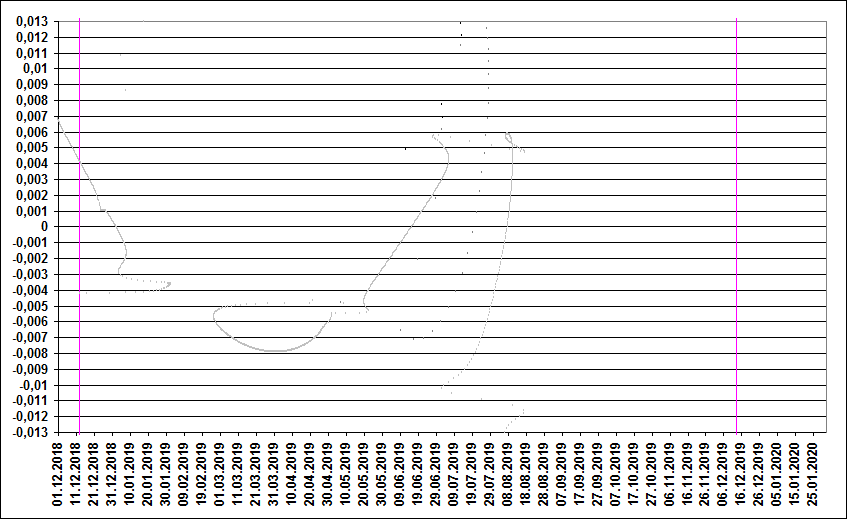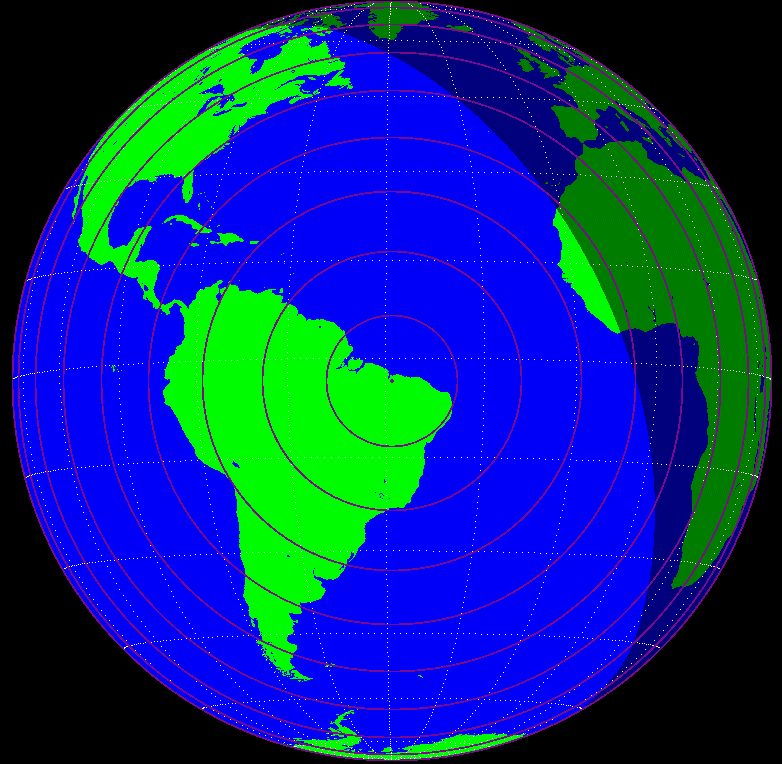46P-ids 2019: predicion of activity
to the list of predictions

Fig. 1. Space-temporal projection of 46P-ids trails parts onto their minimal distance passages in 2019 (correspondence between colours of the particles and their ejection velocities can be seen here).
In the very beginning of 2019 an outburst of 46P-ids meteor shower can occur. The computations show that particles of the young 1974 trail pass at 0.00048 AU from the Earth, with maximum at 18:26 UT on January 4. Ejection velocity of these perticles is quite high, 53.4 m/s, however, such particles are still able to produce visible acitivity outburts, as was shown by the Draconids 1999 outburst, which was caused by particles ejected with velocties of 60-70 m/s. We also should note that the part of 1974 trail encountering the Earth is not very dense, its computed velocoty is 6 times less than that of Draconid 1959 and 1966 trails, which produced meteor activity in 1999. However lower ejection velocity of 46P-ids 1974 trail particles plays in favor of possible 46P-ids activity levels. Considering these factors, we estimate that a small activity appearance is possible at the given time with ZHR~10, mainly with faint meteors. The number of radiometeors could also significantly increase.

Fig. 3. The Earth as seen from coming 46P-ids meteors (RA=337.1°, Dec=-3.4°) during the expected maximum time of outburst from 1974 trail at 18:26 UT on January 4.
The elongation of the radiant from the Sun is not very great, so it could be observed only in the evening time. As shown on the Fig. 2, if the outburst occurs at the computed time, the most favorable conditions would be in some locations of Europe and Africa. In Europe the Iberian peninsula would be the best place to observe with radiant altitude more that 30°. In Africa the western part of Sakhara desert is the most favored place with radiant altitude up to 40° in the dark time. The Moon phase will be around new so it won't create any problems for observations.
Ссылки
1. Программа С. Шанова и С. Дубровского "Comet's dust 2.0". [Used for orbital computations]
2. Lyytinen E, van Flandern T. "Predicting the strength of Leonid outbursts", 2000, Icarus, P. 158-160.
4. Kasuo Kinoshita, http://jcometobs.web.fc2.com/ [Orbital elements of the comet 46P Wirtanen]
4. Jenniskens P. Meteor showers and their parent comets, 2006, 780 p.
Ссылки
1. Программа С. Шанова и С. Дубровского "Comet's dust 2.0". [Used for orbital computations]
2. Lyytinen E, van Flandern T. "Predicting the strength of Leonid outbursts", 2000, Icarus, P. 158-160.
4. Kasuo Kinoshita, http://jcometobs.web.fc2.com/ [Orbital elements of the comet 46P Wirtanen]
4. Jenniskens P. Meteor showers and their parent comets, 2006, 780 p.